Izetta Jewel Brown Miller
Introduction
Text-to-speech Audio
Izetta Jewel Brown Miller, born in 1883, was an actress turned political activist. In 1914, Izetta Jewel married West Virginia Congressman William G. Brown and moved to Kingwood. During her time in West Virginia, 1914-1927, she served as state chairperson for the National Woman’s Party, was active in state and national Democratic Party politics, and ran for Congress twice. Miller was known as having been in the first televised play and the first woman to second a nominee for President of the United States.
Images
Izetta Jewel Miller
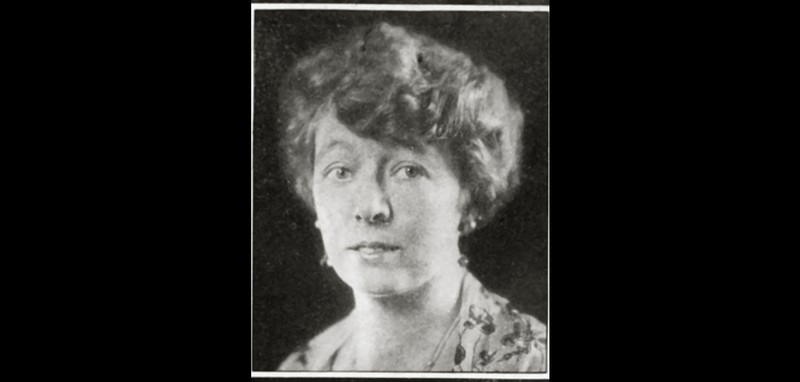
Izetta Jewel
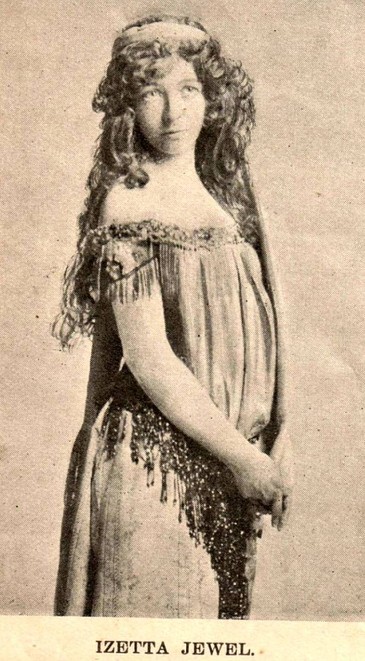
Izetta Jewel in Six Years of Drama at the Castle Square Theatre, 1903
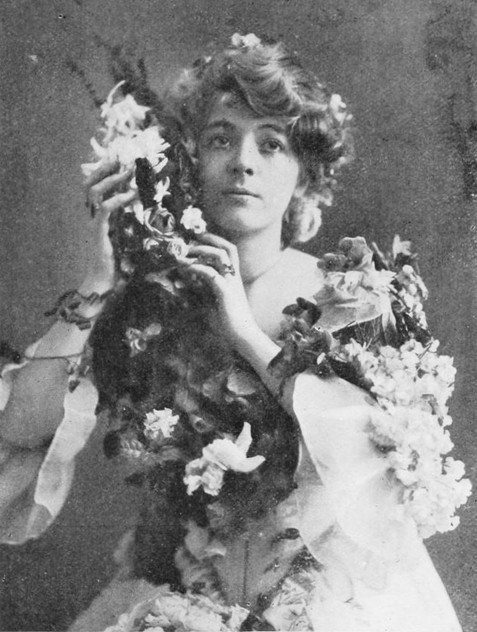
Izetta Jewel Brown, c. 1908
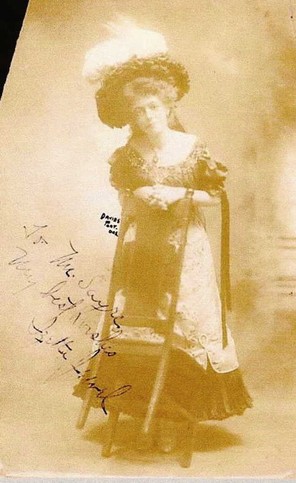
Otis Skinner and Izetta Jewel in "Your Humble Servant"
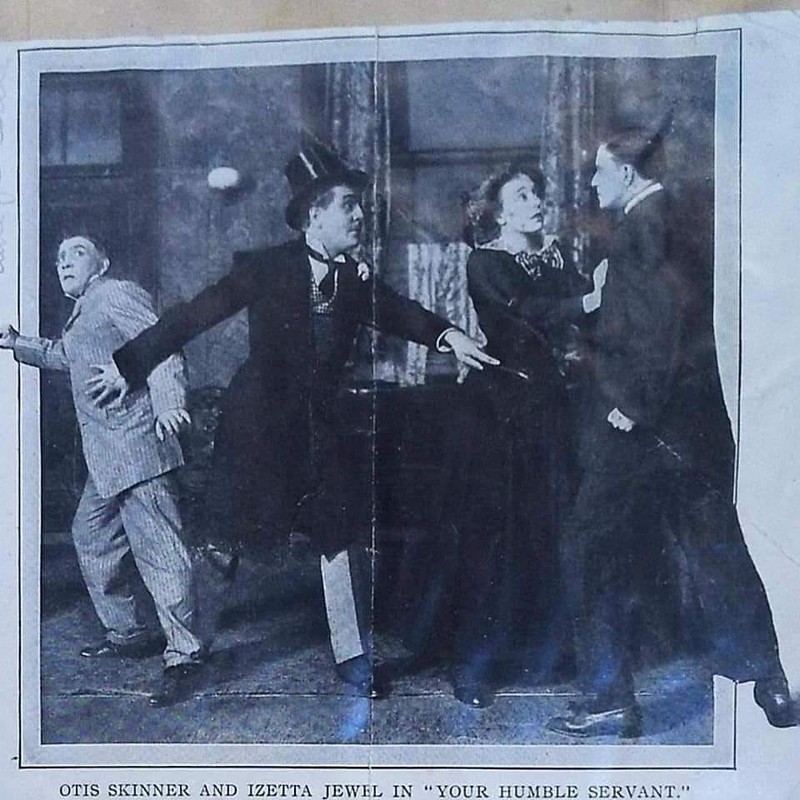
Izetta Jewel's performance of Your Humble Servant with Otis Skinner was her Broadway debut
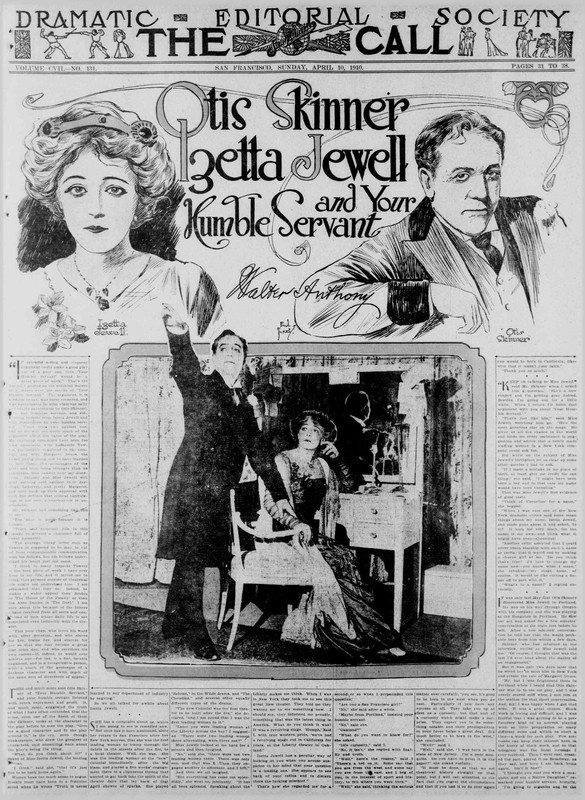
"Former Stage Star a Widow"
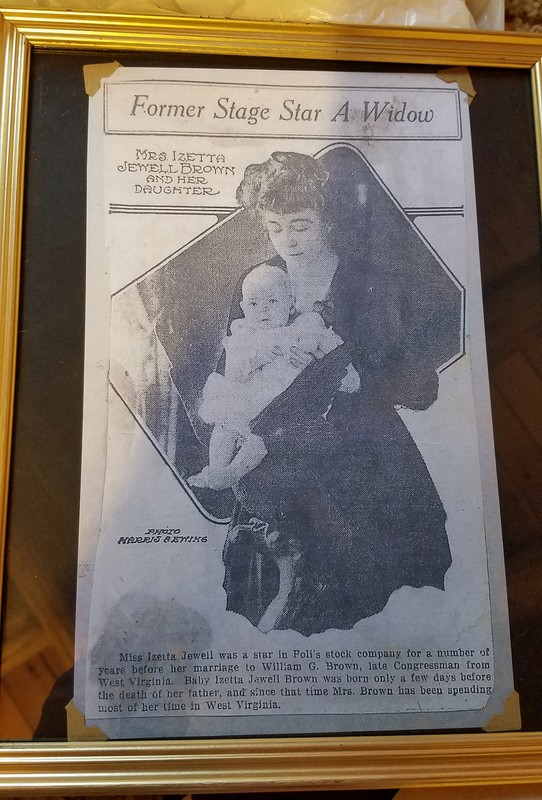
Photo of Izetta Jewel Brown with her daughter Izetta.
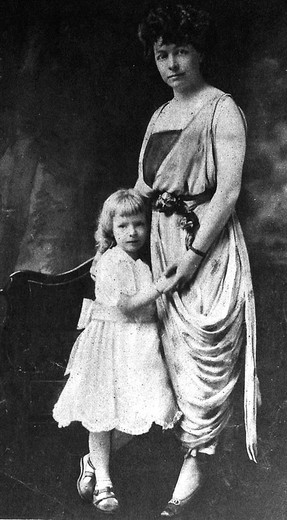
Izetta Jewell Brown, speaking at the Democratic National Convention in 1920. The Suffragist, August 1920
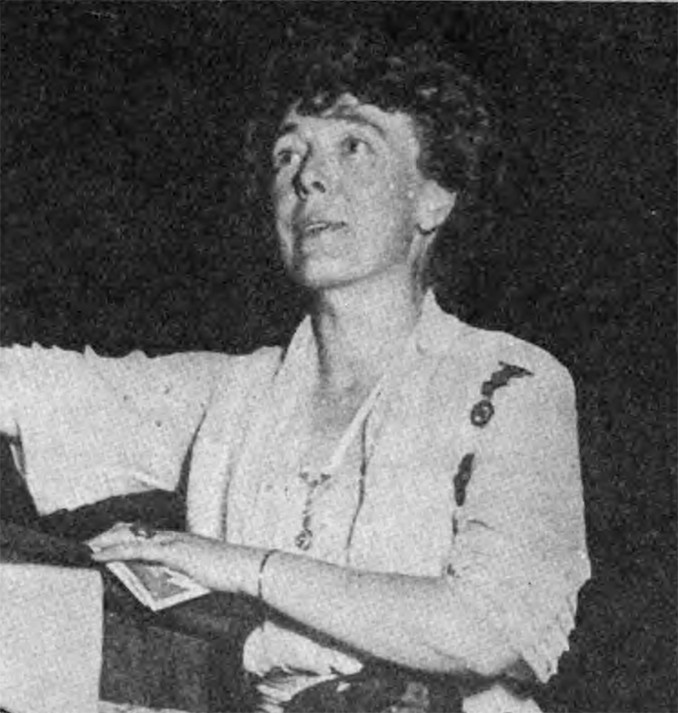
Izetta Jewel Brown represented West Virginia at a National Woman Party meeting with President Harding on April 6, 1921.
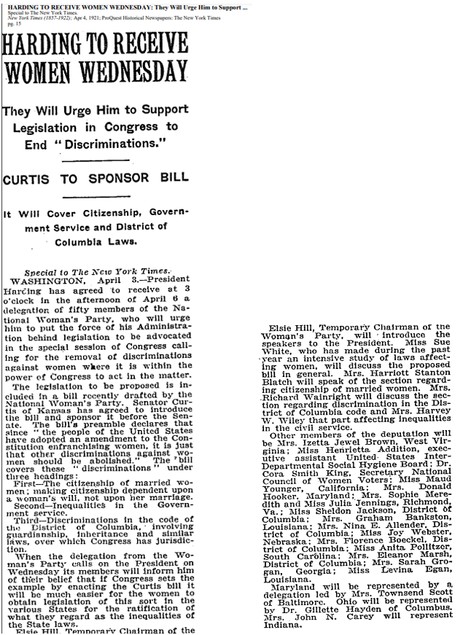
National Women's Party members meet with President Warren Harding. As the West Virginia representative, Izetta Brown is presumably in this picture somewhere.
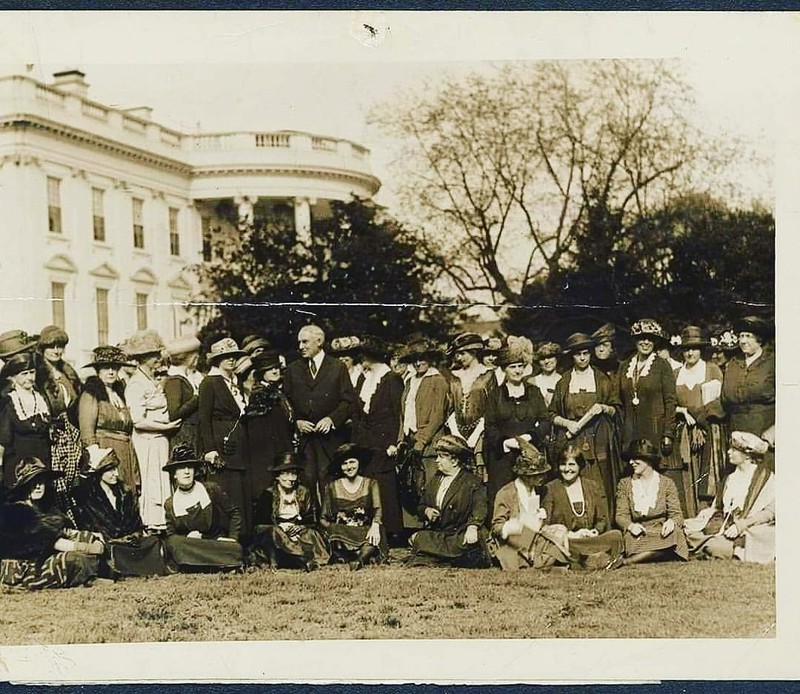
Izetta Jewel Brown is listed as one of the National Woman's Party's "Founders" in a July 1921 New York Times article
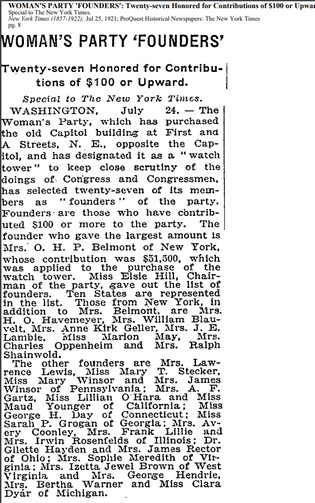
Izetta Jewel Brown, May 1922
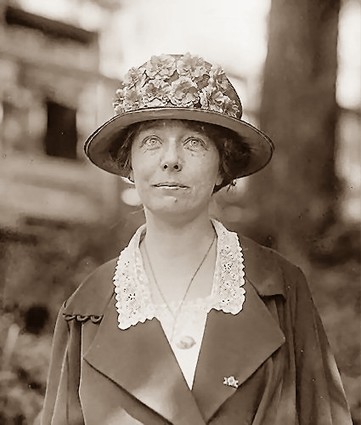
Painting of Izetta Jewel Brown Miller, by P.W. Muncy, 1922 (National Woman's Party Fine Art Collection)
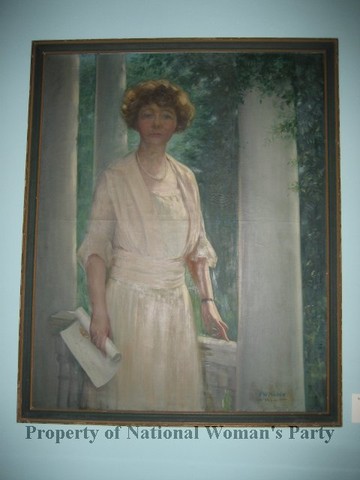
Izetta Jewel Brown, May 22, 1922
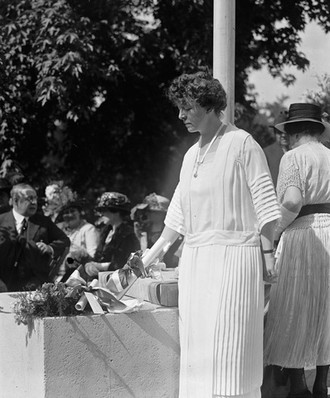
Ad for Izetta Jewell Brown event at Marlinton, Pocahontas Times, July 13, 1922
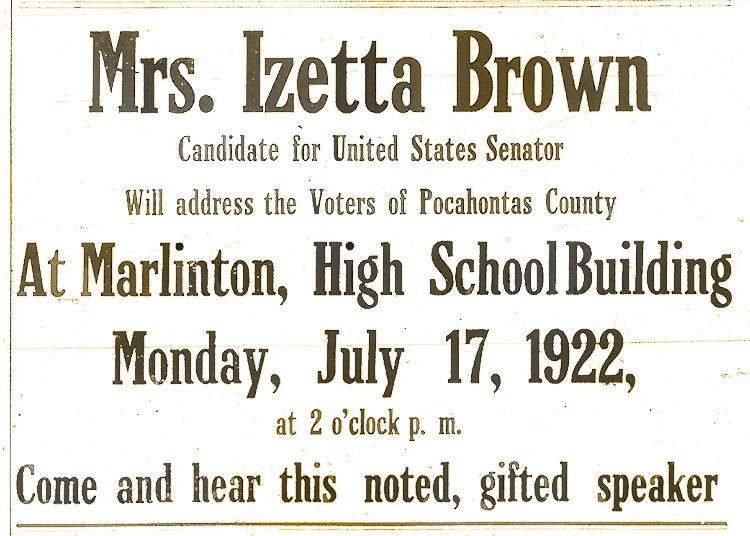
Segment of a New York Times report on the 1924 Democratic Convention
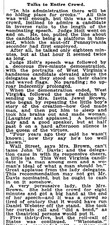
Promotional photo of Izetta Jewel
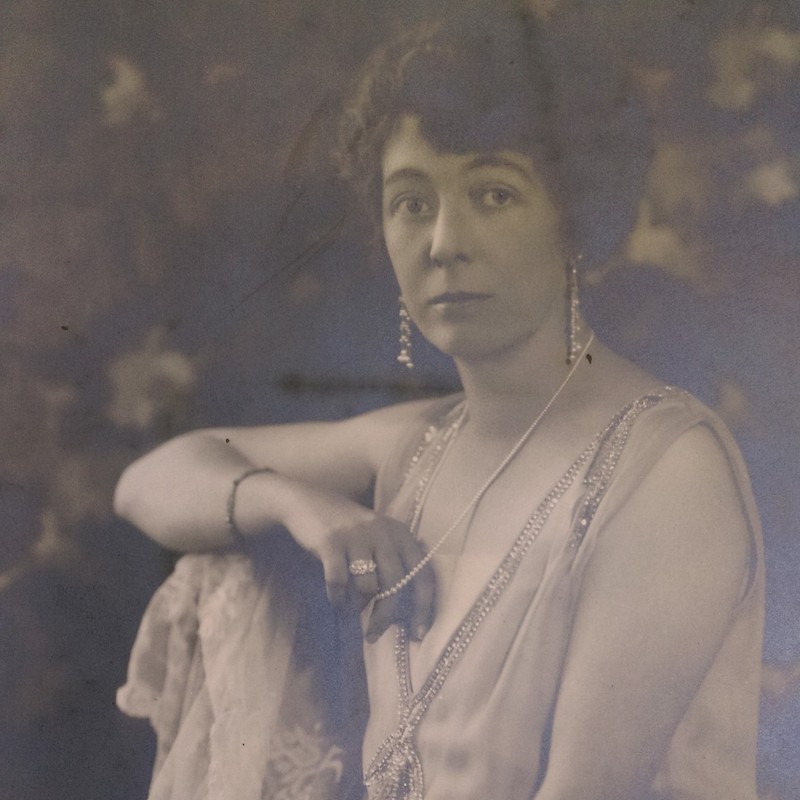
Izetta Jewel in A Queens Messenger Returns, first play broadcast on television, September 11, 1928.
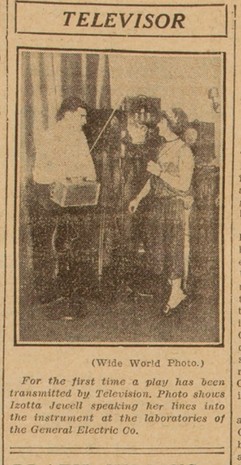
"Izetta Jewel, the first leading lady of a dramatic production presented on television. On September 11, 1928, Jewel starred in the historic broadcast of "A Queen's Messenger Returns" in the groundbreaking broadcast from WGY-TV in Schenectady, New York. MiSci Museum of Innovation and Science, Schenectady, New York"
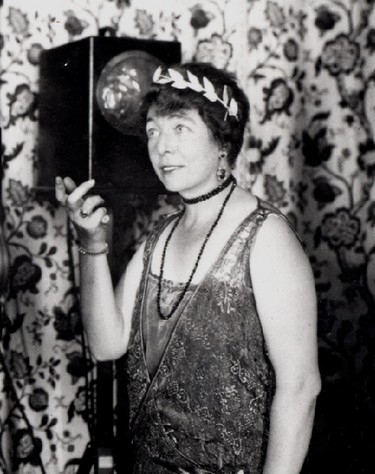
Queen’s Messenger set, Sept. 11, 1928. Izetta is standing at far left.
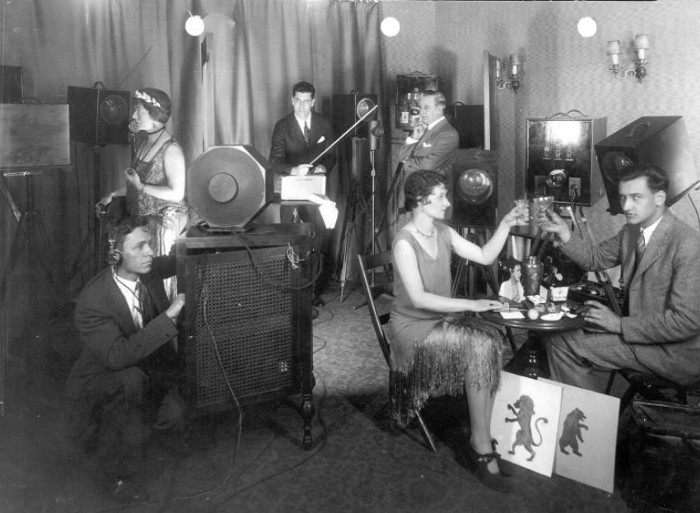
"Mrs. Izetta Jewell Miller of Kingwood, W. Va., the Izetta Jewell of the old Baker stock days of Portland, has been named regional director of women's activities in region No. 2 in the Works Progress administration..."
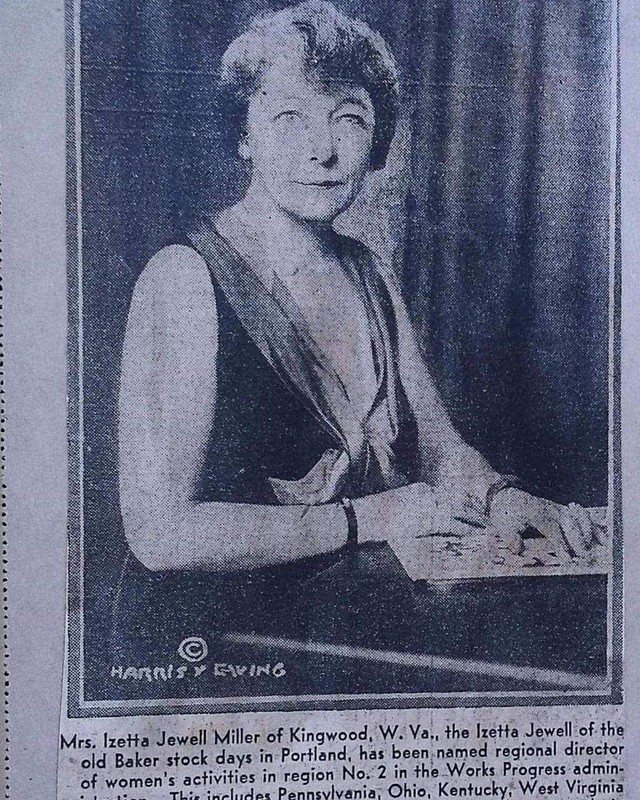
Izetta Jewel Brown Miller, c. 1972
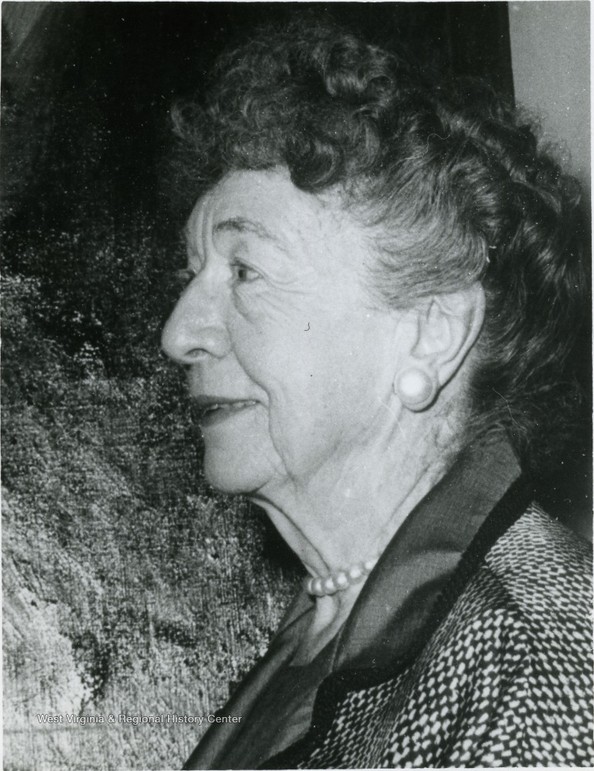
Backstory and Context
Text-to-speech Audio
“You couldn’t think of the Woman’s Party without thinking of Izetta Jewel.” -Alice Paul, 1976
Izetta Jewel Brown Miller was born in 1883 in New Jersey to Cornelius Cooke and Elizabeth Denno Kenney. As a young child, her biological father was divorced from her mother and largely unknown to her, so she assumed the name Izetta Jewel Kenney. Her mother was an artist and interested in the suffrage movement, and she was likely Izetta Kenney’s introduction to the suffrage cause. Izetta Jewel attended private school at Pamlico in Pompton, NJ and East Greenwich Academy in East Greenwich, RI, then trained at the Academy of Dramatic Arts in New York City. Her acting career began at age fifteen. Her acting career blossomed on Broadway and on the West Coast before she moved to Washington, D.C. in 1912. She performed at the Poli Theatre in D.C. with many government officials and presidents in the audience. She was a storied actress and was reportedly the favorite actress of Woodrow Wilson as she was the leading lady in Washington D.C. for many years.
In 1914, Kenney married Congressman William G. Brown of West Virginia and moved to Kingwood, WV. Congressman Brown tragically died less than two years after their marriage and just weeks after the birth of their only daughter. With his death Izetta Jewel Brown inherited a large fortune and the Brown ranch. To continue the family business of breeding milk cows, Izetta Brown studied agriculture and animal husbandry at West Virginia University. As a result, Brown modernized the family’s dairy business, operated three farms, directed West Virginia’s state wool pool, and later worked for the American Farm Bureau Federation.
At some point after her marriage to William Brown, Izetta Brown became involved in the National Woman’s Party and became the West Virginia state chairperson of the Women’s Party. In a later interview of the party’s founder, Alice Paul, Paul noted that Izetta Brown took over the chairperson position from her mother, indicating that Elizabeth Kenney was also involved in the National Women’s Party. According to Paul, “At this time, after she married Congressman Brown, she took over the state chairmanship of West Virginia, which her mother had had, and was all through this period coming up to our meetings in Washington as a state chairman of West Virginia.” Most other sources claim that Izetta Jewel Brown was the first state chairperson in West Virginia. According to research done by Anne Effland, West Virginia was slow to found an official chapter of the National Women’s Party. Prior to 1917 individual women supported the work of the NWP and sent in donations and there is evidence that the NWP was actively recruiting for support in 1917. National Woman’s Party meetings were help in the spring of 1918 at the request of Izetta Brown, although Effland states that there was still no official chapter that year. Most West Virginia suffragists, especially those affiliated with the West Virginia Equal Suffrage Association were more aligned with the tactics of the National American Woman Suffrage Association, rather than the more radical National Woman’s Party.
Izetta Jewel Brown was the first woman to nominate a candidate for president, nominating John W. Davis of West Virginia at the 1920 Democratic Convention. In 1924 she again made history by being the first woman to offer the second nomination speech for a candidate, again nominating John W. Davis. Brown attempted to run for Congress twice in 1922 and 1924, one of the first women to run for state office after the ratification of the 19th Amendment, losing in the Democratic primaries by a small margin. In 1924 she became the first southern woman to win a major party’s nomination as West Virginia Democrats nominated her for vice president. According to fellow suffragist Alice Paul, “one regret that I have is that we didn't get Izetta Jewel Miller into Congress. She wanted very much to be a congressman.”
In 1927, Izetta Jewel Brown married Hugh Miller who was a retired Army lieutenant colonel and dean of the College of Engineering at George Washington University. Hugh Miller became the head of the civil engineering department at Union College and the couple moved to Schenectady, New York. While in New York, Izetta Brown Miller was a radio broadcaster at General Electric’s WGY and was in the first play broadcast by tv which was entitled “The Queens Messenger Returns” in 1928. She ran for office again in her new homestate of New York; she ran for election in the 30th Congressional District in 1930 and for New York State Assembly District 2 in 1931 (losing by only about 500 votes). She served as Schenectady’s Commissioner for Public Welfare between 1931 and 1934 during the Great Depression, was the Regional Director of Women’s Activities representing the central states in the Works Progress Administration, and traveled the country to stump for Franklin D. Roosevelt in 1936. With the start of World War II, Brown Miller also served as Regional Supervisor for War Public Services.
After World War II, Hugh and Izetta Miller moved to La Jolla, California in 1948 due to Hugh’s declining health. Izetta Brown Miller continued her entertainment career by becoming a regular commentator on a radio station in La Jolla and became active in many community groups dealing with women’s activities, reform, and the arts. She also continued campaigning for women’s rights through supporting the passage of the Equal Rights Amendment well into her older years. Hugh Miller died in 1965 and Izetta Brown Miller remained in La Jolla util her death on November 14, 1978.
Sources
“Conversations with Alice Paul: Woman Suffrage and the Equal Rights Amendment.” Suffragists Oral History Project. Interview by Amelia R. Fry, January 5, 1976. Online Archive of California. Accessed February 9, 2022. https://oac.cdlib.org/view?docId=kt6f59n89c&query=&brand=oac4
Effland, Anne Wallace. “The Woman Suffrage Movement in West Virginia, 1867-1920.” M.A. Thesis, West Virginia University, 1983. Accessed February 9, 2022. https://researchrepository.wvu.edu/cgi/viewcontent.cgi?article=8404&context=etd.
“Hugh Bartley Miller.” Find A Grave. Accessed February 9, 2022. https://www.findagrave.com/memorial/3418818/hugh-bartley-miller.
"Izetta Jewel Miller Is Dead at 94; Ex‐Actress and Political Activist." The New York Times (New York City, NY) November 15th 1978.
Izetta Jewel Brown Miller, Women's Suffrage in West Virginia. Accessed December 16th 2021. https://wvsuffrage.lib.wvu.edu/home/s/WV-womens-suffrage/item/777.
“Izetta Jewel Kenney Miller.” Find A Grave. Accessed February 9, 2022. https://www.findagrave.com/memorial/49772286/izetta-jewel-miller.
“Papers of Izetta Jewel, ca. 1950-1988 (inclusive), 1899-1965 (bulk). Schlesinger Library, Radcliff Institute. Harvard Library. Accessed February 9, 2022. https://hollisarchives.lib.harvard.edu/repositories/8/resources/9620.
Rockwood, Anne, Suzan Gingery, and Joseph Hitt. “Biography of Izetta Jewel Brown (Miller), 1883-1978.” Biographical Database of NAWSA Suffragists, 1890-1920. Accessed February 9, 2022. https://documents.alexanderstreet.com/d/1009755088.
"Three High Places in Career of Mrs. Izetta Jewel Miller." Evening Star (Washington, D.C.) May 7th 1936. , A-14-A-14.
Izetta Jewel Brown Miller, Women's Suffrage in West Virginia. Accessed December 16th 2021. https://wvsuffrage.lib.wvu.edu/home/s/WV-womens-suffrage/item/777.
“Izetta Jewel Kenney Miller.” Find A Grave. Accessed February 9, 2022. https://www.findagrave.com/memorial/49772286/izetta-jewel-miller.
"Izetta Jewel." Wikipedia. Accessed February 9, 2022. https://en.wikipedia.org/wiki/Izetta_Jewel.
Brumfield, Dale M. "Izetta Jewel: amazing but unknown woman of firsts." Medium. November 13, 2018. Accessed February 9, 2022. https://medium.com/lessons-from-history/izetta-jewel-amazing-but-unknown-woman-of-firsts-eed7946689a8.
"Izetta Jewel." Facebook. January 3, 2021. Accessed February 9, 2022. https://www.facebook.com/izettajewel/photos/a.1864896987168800/2938436546481500/.
"Izetta Jewel." Facebook. January 5, 2021. Accessed February 9, 2022. https://www.facebook.com/izettajewel/photos/a.1727223464269487/2940157816309373/.
"Izetta Jewel." Facebook. March 7, 2020. Accessed February 9, 2022. https://www.facebook.com/izettajewel/photos/a.1864896987168800/2660979294227228/.
"Izetta Jewel." Facebook. March 8, 2021. Accessed February 9, 2022. https://www.facebook.com/izettajewel/photos/a.1727223464269487/2988173591507795/.
"Izetta Jewell Brown, speaking at the Democratic National Convention in 1920. The Suffragist, August 1920." Fighting the Long Fight: West Virginia Women and the Right to Vote. Accessed February 9, 2022. http://129.71.204.160/history////exhibitsonline/suffrage/suffrage65.html.
"HARDING TO RECEIVE WOMEN WEDNESDAY: They Will Urge Him to Support Legislation in Congress to End "Discriminations." CURTIS TO SPONSOR BILL It Will Cover Citizenship, Government Service and District of Columbia Laws." New York Times, April 4, 1921. Accessed through ProQuest, February 9, 2022.
"Izetta Jewel." Facebook. November 17, 2019. Accessed February 9, 2022. https://www.facebook.com/izettajewel/photos/a.1864896987168800/2549040538754438/.
"Woman's Party 'Founders': Twenty-seven Honored for Contributions of $100 or Upward." New York Times, July 25, 1921. Accessed through ProQuest, February 9, 2022.
"Izetta Jewel." Wikipedia. Accessed February 9, 2022. https://en.wikipedia.org/wiki/Izetta_Jewel.
"Painting of "Izetta Jewel Brown Miller (1883-1978)" by P.W. Muncy, 1922." NWP. Accessed February 9, 2022. https://nationalwomansparty.pastperfectonline.com/webobject/A7B7744B-9D73-47D4-A327-545435998340.
Thomas, Jerry Bruce. "Izetta Jewell Brown." e-WV. The West Virginia Encyclopedia. Accessed February 9, 2022. https://www.wvencyclopedia.org/articles/667.
"Ad for Izetta Jewell Brown event at Marlinton, Pocahontas Times, July 13, 1922." Fighting the Long Fight: West Virginia WOmen and the Right to Vote. Accessed February 9, 2022. http://129.71.204.160/history////exhibitsonline/suffrage/suffrage66.html.
Davis, Elmer. "LAST NOMINEES IN FIELD: Call of the States Ends With Sixteen Candidates Named. MANY SECONDING SPEECHES John W. Davis, Glass, Cox, Silzer, C.W. Bryan and Brown Added to the Long List. WOMEN LEAD IN ORATORY They Stir Up Weary Delegates and Start Real Demonstrations. LAST NOMINEES IN FIELD." New York Times, June 28, 1924. Accessed through ProQuest, February 9, 2022.
"Izetta Jewel." Facebook. January 6, 2021. Accessed February 9, 2022. https://www.facebook.com/izettajewel/photos/a.1716234245368409/2941085642883257/.
"Izetta Jewel." Facebook. October 14, 2020. Accessed February 9, 2022. https://www.facebook.com/photo/?fbid=10224952317094819&set=gm.772977596643390.
Rockwood, Anne, Suzan Gingery, and Joseph Hitt. “Biography of Izetta Jewel Brown (Miller), 1883-1978.” Biographical Database of NAWSA Suffragists, 1890-1920. Accessed February 9, 2022. https://documents.alexanderstreet.com/d/1009755088.
Brumfield, Dale M. "Izetta Jewel: amazing but unknown woman of firsts." Medium. November 13, 2018. Accessed February 9, 2022. https://medium.com/lessons-from-history/izetta-jewel-amazing-but-unknown-woman-of-firsts-eed7946689a8.
"Portland, Oregon Oregon Journal Newspaper clipping from the Izetta Jewel Papers Schlesinger Library | Radcliffe Institute | Harvard University." "Izetta Jewel" Facebook. November 30, 2019. Accessed February 9, 2022. https://www.facebook.com/izettajewel/photos/a.1864896987168800/2562202204104938/.
"Izetta Jewel Brown Miller of Kingwood, W. Va." West Virginia History OnView. West Virginia & Regional History Center. Accessed February 9, 2022. https://wvhistoryonview.org/catalog/039718.
